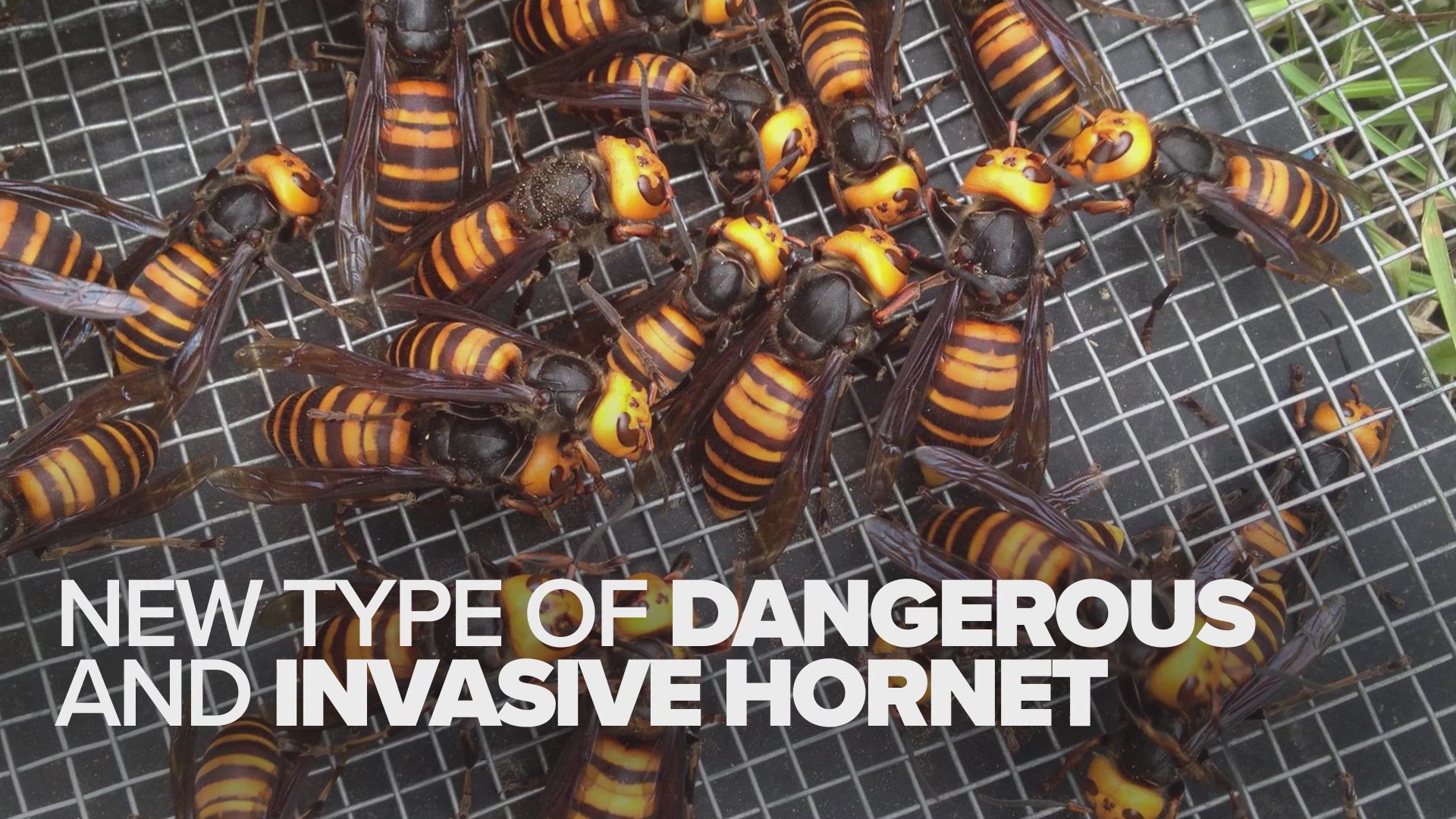WHATCOM COUNTY, Wash. — Ted McFall has been around bees all his life, and now keeps about two dozen hives in Whatcom County.
In November 2019, he discovered a strong colony had been decimated – bees littered the ground, and were wiped out inside the hive.
“As I looked a little bit closer I noticed they had their heads chopped off, and had been totally slaughtered,” he said.
He chalks that up to the Asian giant hornet, though that hasn't been officially confirmed. But any other invader would have suffered some losses too, McFall reasons, and he could only find dead bees.
The race is on in Washington state to eradicate a large, bee-killing pest found in the U.S. for the first time – the Asian giant hornet.
RELATED: 'It's a shockingly large hornet': WSU seeks public help tracking invasive Asian Giant Hornet
These massive insects can be 1.5- to 2-inches long – with a stinger longer than a common hornet. They don’t generally attack humans and animals, but can be dangerous and even fatal if threatened. They can sting repeatedly, and have a more toxic venom that common hornets, officials said.
They’re also devastating to honeybees – they attack and destroy hives in just a matter of hours in a "slaughter phase." After killing the bees, they eat the larvae and pupae.
The first Asian giant hornet in the U.S. was documented in Whatcom County in December 2019. Washington State University scientists have been working to track them for several months.
But over the weekend, the country at-large learned about the pest thanks to a New York Times article and the resulting social media fervor.
Some even refer to them as "murder hornets," because of their vicious behavior killing bees.
The Washington Department of Agriculture can’t confirm that the giant hornet attacked McFall's hive but the first confirmed giant hornet was found just a couple miles away, said entomologist Sven-Erik Spichiger.
Between several hornet spottings, and apparent hive attacks, they’re fairly certain a nest has been established somewhere near Blaine.
"Once they latch on to a colony, it’s pretty much dead,” said Spichiger, who is the managing entomologist for the pest program at the state's Department of Agriculture. “Six Asian giant hornets can take out 30,000 honeybees in an otherwise healthy hive.”
The Dept of Agriculture shared McFall’s pictures on its hornet tracker landing page.
The hornets were also found in two locations in British Columbia last fall, the Washington Department of Agriculture said. One hornet's nest was destroyed in Nanaimo.
Agriculture is setting experimental traps right now in hopes of capturing hornet queens, but staffers expect to have more success in July when the insects are more active.
If they locate any dead hornets in these traps, they’ll try to capture some alive so they track them back to the nest, and destroy it.
It’s critical, experts said, to work fast so the hornets can’t establish a stronger foothold in the U.S., and spread further.
How they got here, Spichiger said, we’ll likely never know.
He said he’s not wild about the term "murder hornet" though – because it clouds the conversation about this serious threat to bees in the U.S.
“Our biggest hope is that people will want to learn about this,” he said. “And if you do a Google search about ‘murder hornets,’ all you’re going to find is the original (New York Times) article and the ones that spun off of it. For my perspective, it does a disservice because it won’t help people get to more information about it.”
And that’s important, he said, because the potential impact from these gigantic hornets is also large.
“If those colonies are able to spread, there will be more decimation in the bee population,” McFall said. “And of course, the bee population is intimately linked with the food supply.”
McFall also felt a little conflicted by the nickname – what makes an animal that kills to eat more murderous than any other?
But after seeing what happened to his bees, he felt less divided.
“I do hate those Asian giant hornets so much, that I have no problem calling it a ‘murder hornet’ myself,” he said.
What to do if you see a giant hornet
The Washington Department of Agriculture is aggressively tracking sightings of the Asian giant hornet. If you believe you've encountered one, there is a form to report it here.
Spichiger added if you encounter an Asian giant hornet, keep your distance. And if you're stung, seek medical attention as a precaution.
And a final note, standard beekeeping equipment won't cut it.
"They're kind of scary, because the stinger itself can be up to six millimeters long, which can go through just about anything, any kind of clothing," he said.


